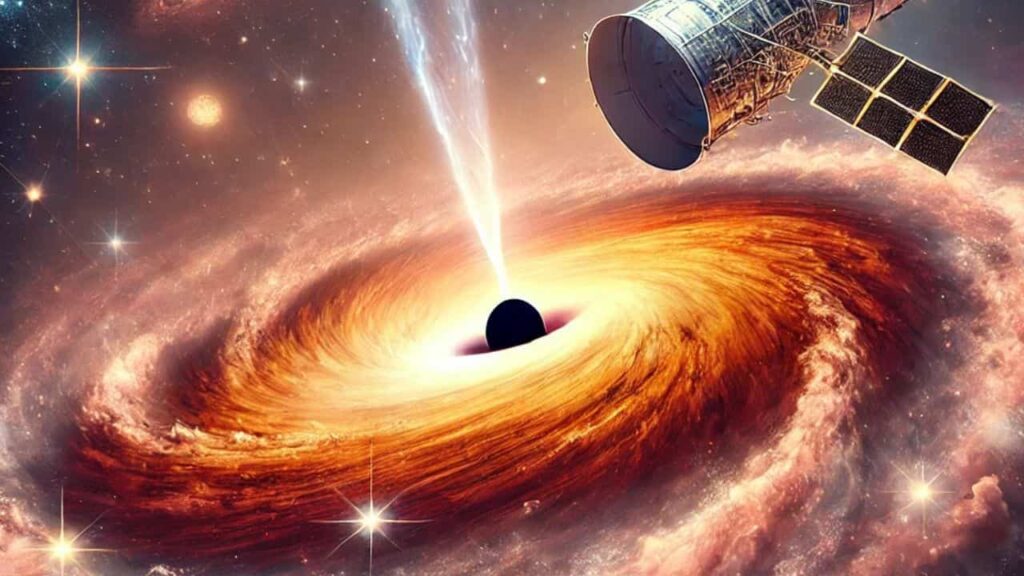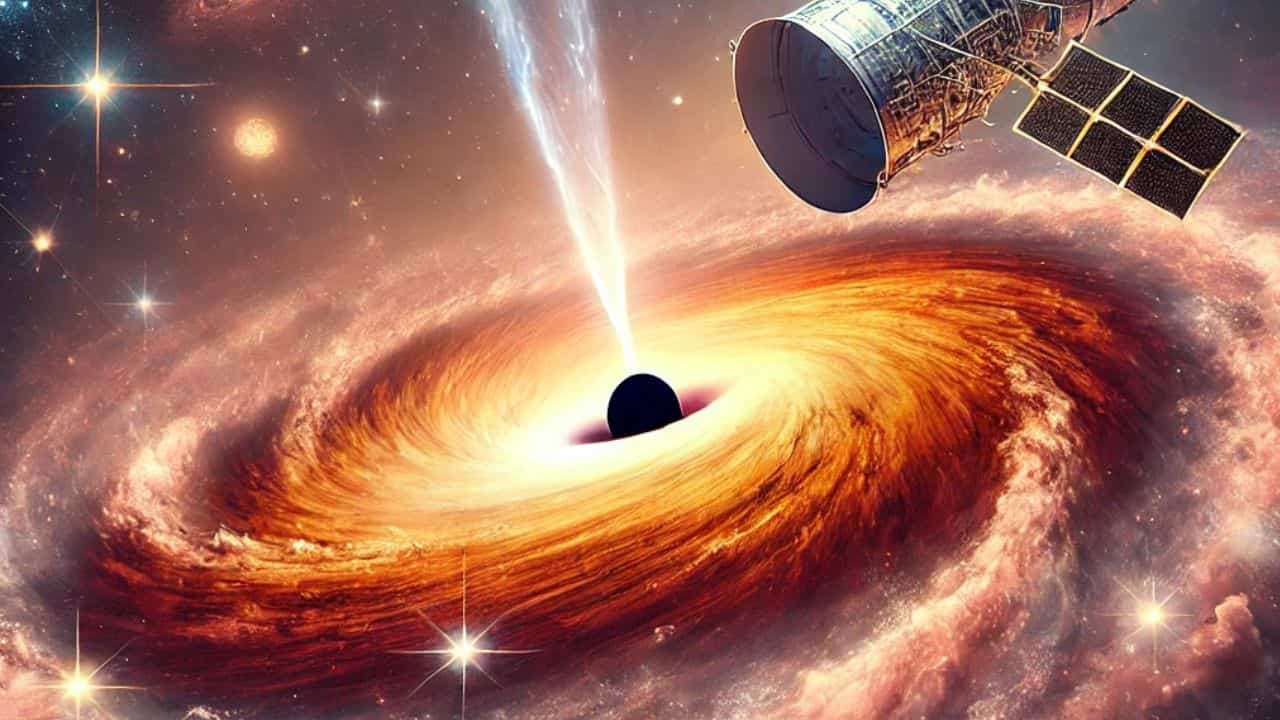NASA Hubble Space Telescope, Intermediate-Mass Black Hole, Omega Centauri, Black Hole Discovery, Astronomy, Space Research, IMBH, Globular Cluster, Space Science
NASA’s Hubble Space Telescope has discovered compelling evidence for an intermediate-mass black hole in the globular star cluster Omega Centauri. This groundbreaking find sheds light on the “missing links” in black hole evolution and opens new avenues for space research.

NASA’s Hubble Finds Strong Evidence for Intermediate-Mass Black Hole in Omega Centauri
Most known black holes are either extremely massive, like the supermassive black holes that lie at the cores of large galaxies, or relatively lightweight, with a mass of under 100 times that of the Sun. Intermediate-mass black holes (IMBHs) are scarce, however, and are considered rare “missing links” in black hole evolution. An international team of astronomers has used over 500 images from NASA’s Hubble Space Telescope — spanning two decades of observations — to search for evidence of an intermediate-mass black hole by following the motion of seven fast-moving stars in the innermost region of the globular star cluster Omega Centauri.
Discovery and Evidence
These stars provide new compelling evidence for the presence of the gravitational pull from an intermediate-mass black hole tugging on them. Only a few other IMBH candidates have been found to date. Omega Centauri consists of roughly 10 million stars that are gravitationally bound, making the cluster about 10 times as massive as other big globular clusters — almost as massive as a small galaxy.
Among the many questions scientists want to answer: Are there any IMBHs, and if so, how common are they? Does a supermassive black hole grow from an IMBH? How do IMBHs themselves form? Are dense star clusters their favored home? The astronomers have now created an enormous catalog for the motions of these stars, measuring the velocities for 1.4 million stars gleaned from the Hubble images of the cluster. Most of these observations were intended to calibrate Hubble’s instruments rather than for scientific use, but they turned out to be an ideal database for the team’s research efforts.
The Fast-Moving Stars
“We discovered seven stars that should not be there,” explained Maximilian Häberle of the Max Planck Institute for Astronomy in Germany, who led this investigation. “They are moving so fast that they would escape the cluster and never come back. The most likely explanation is that a very massive object is gravitationally pulling on these stars and keeping them close to the center. The only object that can be so massive is a black hole, with a mass at least 8,200 times that of our Sun.”
Competing Theories and Confirmation
Several studies have suggested the presence of an IMBH in Omega Centauri. However, other studies proposed the mass could be contributed by a central cluster of stellar-mass black holes and had suggested the lack of fast-moving stars above the necessary escape velocity made an IMBH less likely in comparison. “This discovery is the most direct evidence so far of an IMBH in Omega Centauri,” added team lead Nadine Neumayer of the Max Planck Institute for Astronomy in Germany, who initiated the study, together with Anil Seth from the University of Utah, Salt Lake City. “This is exciting because there are only very few other black holes known with a similar mass. The black hole in Omega Centauri may be the best example of an IMBH in our cosmic neighborhood.”
If confirmed, at a distance of 17,700 light-years, the candidate black hole resides closer to Earth than the 4.3-million-solar-mass black hole in the center of the Milky Way, located 26,000 light-years away.
Historical and Observational Significance
Omega Centauri is visible from Earth with the naked eye and is one of the favorite celestial objects for stargazers living in the southern hemisphere. Located just above the plane of the Milky Way, the cluster appears almost as large as the full Moon when seen from a dark rural area. It was first listed in Ptolemy’s catalog nearly 2,000 years ago as a single star. Edmond Halley reported it as a nebula in 1677. In the 1830s, the English astronomer John Herschel was the first to recognize it as a globular cluster.
The Hubble Space Telescope has been operating for over three decades and continues to make groundbreaking discoveries that shape our fundamental understanding of the universe. Hubble is a project of international cooperation between NASA and ESA (European Space Agency). NASA’s Goddard Space Flight Center in Greenbelt, Maryland, manages the telescope and mission operations. Lockheed Martin Space, based in Denver, Colorado, also supports mission operations at Goddard. The Space Telescope Science Institute in Baltimore, Maryland, which is operated by the Association of Universities for Research in Astronomy, conducts Hubble science operations for NASA.
The Significance of IMBHs
Intermediate-mass black holes are a crucial link in understanding black hole evolution. They may represent a transitional phase between stellar-mass black holes, which form from the collapse of massive stars, and supermassive black holes, which dominate the centers of galaxies. The discovery of IMBHs can help astronomers understand the processes that lead to the growth of supermassive black holes.
Future Research and Observations
The evidence found by Hubble in Omega Centauri opens up new avenues for research. Future observations, possibly with next-generation telescopes like the James Webb Space Telescope, could provide more definitive proof of the existence of IMBHs and help answer lingering questions about their formation and role in the cosmos. Scientists are also interested in using other observational techniques, such as radio and X-ray astronomy, to gather additional data on these elusive black holes.
Conclusion
The discovery of an intermediate-mass black hole in Omega Centauri represents a significant milestone in the field of astrophysics. It not only provides strong evidence for the existence of IMBHs but also raises new questions about their formation, prevalence, and relationship to other types of black holes. As astronomers continue to study Omega Centauri and other potential IMBH candidates, we can expect to gain deeper insights into the complex and fascinating nature of black holes and their role in the universe.
Read More
- Eight CubeSats Launch on Firefly Aerospace Rocket for NASA CubeSat Initiative
- Loral O’Hara and Team Triumph: A Journey of Discovery and Return from the ISS
- Odysseus Moon Lander Reveals Earth Technosignatures: What Aliens Might See
- TOP 3 Food Dehydrators in 2023










